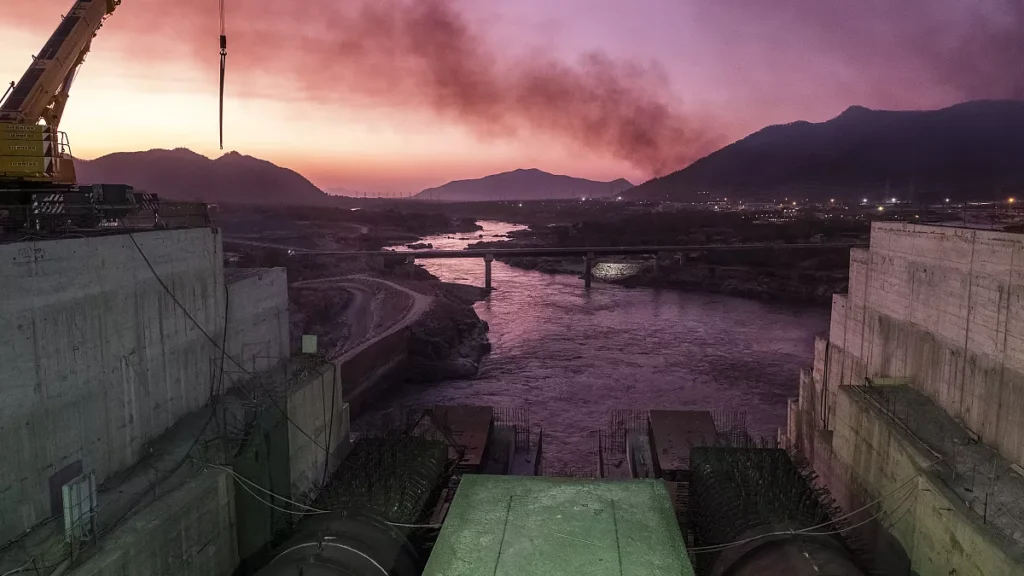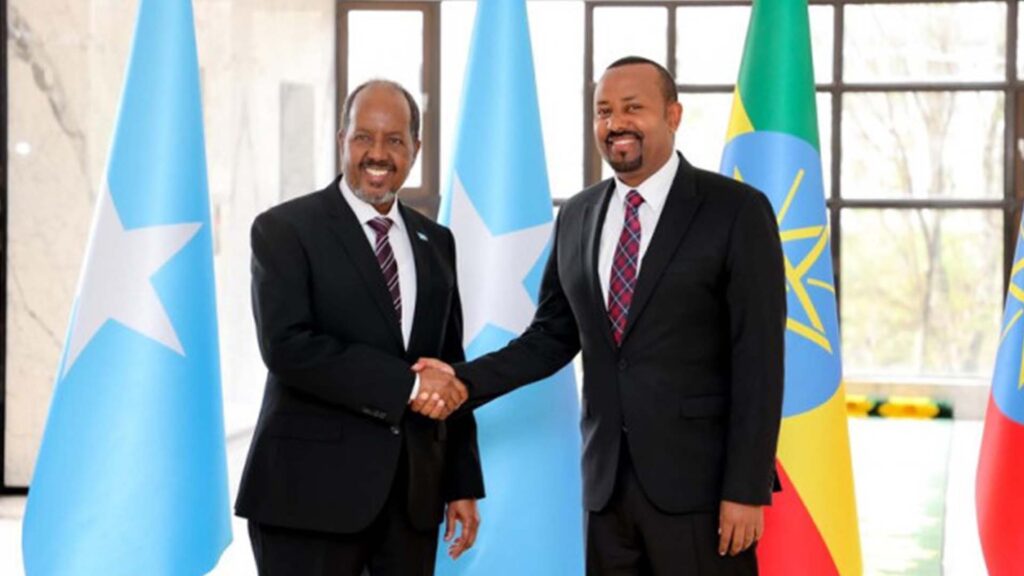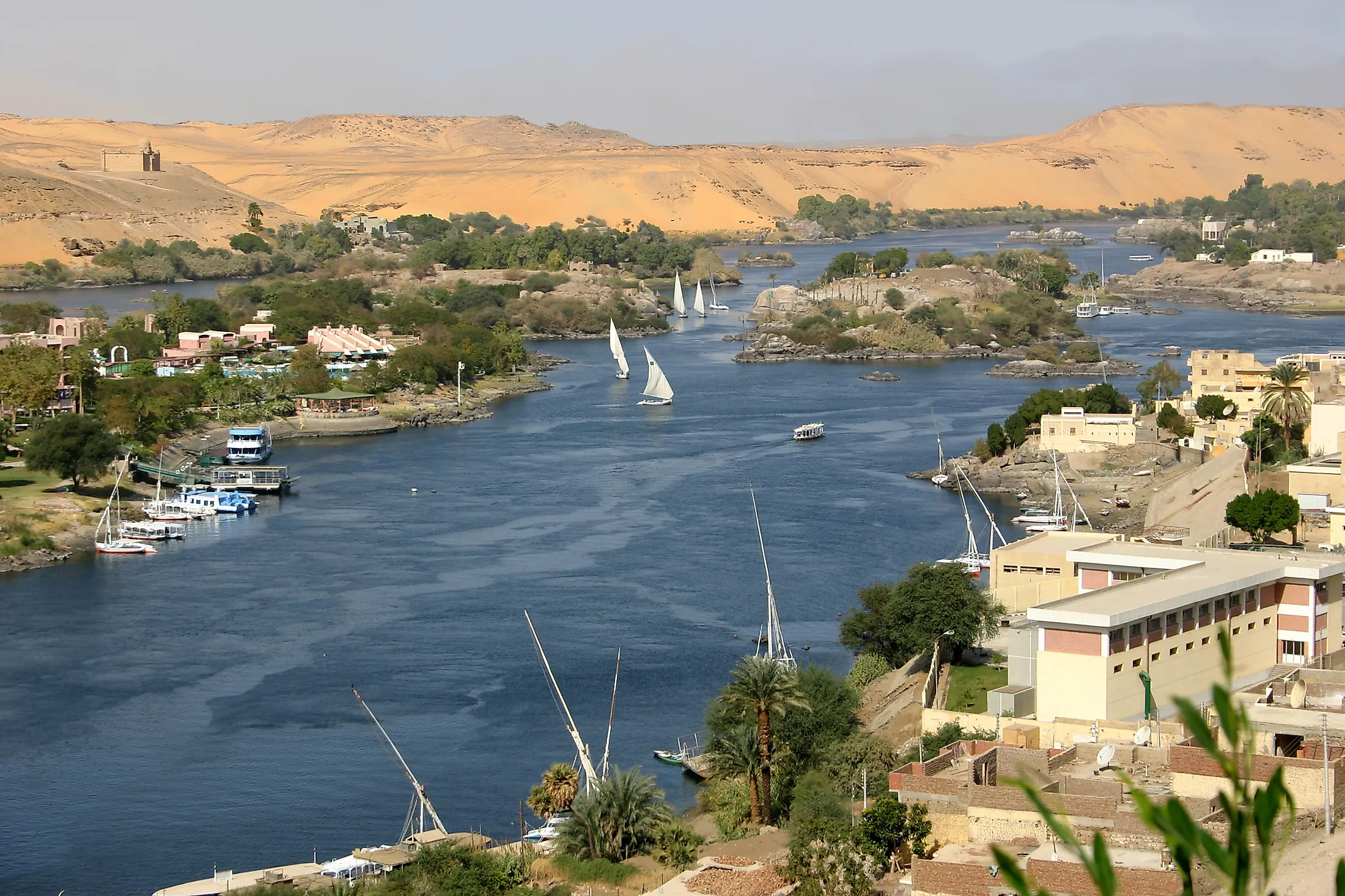Food & Climate
The crisis of the Ethiopian Renaissance Dam and Egypt’s historical share of the threatened Nile River water continues to stir popular battles in Cairo and Addis Ababa, while the Egyptian government maintains complete silence.
According to old agreements dating back to the 1950s, Egypt’s annual share of the Nile River water is 55.5 billion cubic meters.
While some repeat information about seismic activity in Ethiopia and what could result from it in the collapse of the Renaissance Dam, led by geologist Abbas Sharaqi, others warned against repeating talk about this matter that numbs public sentiment and gives the impression that God will take charge of demolishing the Renaissance Dam, led by former Minister of Irrigation and Water Resources Mohamed Nasr Allam.
Until the Egyptian-American space scientist, Essam Heggy, joined the battle today, Saturday, January 4, 2025, to answer questions about earthquakes, warning against engaging in side battles, while the greater attention should be focused on periods of drought.
However, the matter in Ethiopia has reached advanced stages, as it has surpassed all these marginal issues, as the media is discussing the electricity generated by the Renaissance Dam, and the projects expected to be implemented once the Entebbe Agreement enters into actual implementation, which is expected to be in April.
In the same context, statements in Ethiopian and Somali media outlets indicated the progress of negotiations between the two sides, to the point that Mogadishu agreed to Addis Ababa’s participation in the peacekeeping forces in the country after a refusal that lasted more than a year, especially after a dispute with Burundi that prompted it to withdraw from these forces, despite its previous major role.
Egypt’s position on this rapprochement is not yet clear, especially since Cairo signed a joint defense agreement with Mogadishu earlier, as part of attempts to besiege Ethiopia, according to experts.
Despite all this noise, Cairo maintains complete silence, and also prevents talking about this issue inside the country, whether in the media or by officials of international institutions, according to information reviewed by the “Food & Climate” platform.
Ethiopia earthquakes and the Renaissance Dam
Continuing the tweets of the Egyptian geologist Abbas Sharaqi on the social networking site (Facebook), he wrote today, Saturday, January 4, 2025, under the title “The strongest earthquake in the last ten years, 5.8 degrees”, saying: “Seismic activity continues strongly in Ethiopia, as a 5.8-magnitude earthquake occurred before dawn today at 2:53 am Cairo time, at a depth of 10 km in the Ethiopian Rift Valley region, 10 km north of the Doven volcano, which began its activity yesterday. It is the strongest earthquake in the last ten years, and no information has been received about the losses.”
A few days ago, Sharaki wrote on his Facebook page: “The unprecedented seismic activity continues in Ethiopia, as this morning, Monday, December 30, 2024, 7 earthquakes with a magnitude of 5.1 occurred at a depth of 10 kilometers, 500-600 kilometers from the Renaissance Dam, and 100-150 kilometers from the capital, Addis Ababa.”
While the former Minister of Irrigation and Water Resources, Mohamed Nasr Allam (who was minister from 2009 to 2011), warned on the same social networking site, on Thursday, January 2, 2025, against repeating talk about earthquakes, the Egyptian-American space scientist at NASA, Essam Heggy, shared a similar tweet.
Allam said: “Daily comic comments about earthquakes and tremors in Ethiopia because God is upset with them because they upset Egypt, Shame on you and enough of this, Egypt is much bigger than this.”

Heggy wrote a comment on Facebook under the title “Is the Grand Ethiopian Renaissance Dam about to collapse?”, saying: “Our scientific team received many questions about the relationship between the current seismic activity in Ethiopia and its impact on the Grand Ethiopian Renaissance Dam. As a researcher specializing in monitoring volcanoes and earthquakes using advanced technologies, i want to clarify the following: Seismic activity in Ethiopia is concentrated in the Great African Rift Valley, which is more than 560 km away from the Grand Ethiopian Renaissance Dam site. It is a geological fault that has been active for more than 25 million years, which means that seismic activity is not a new phenomenon. But rather a result of volcanoes that are frequently active at different intervals; it may reach tens or thousands of years. These volcanoes are preceded by natural seismic activity, as is happening today in Ethiopia, and it is natural that it will continue for the coming period. But not because of the dam lake as is rumored in the media.”
Heggi added: “There is no doubt that natural disasters such as earthquakes have a significant impact on facilities such as dams, but when building them, the seismic nature of the construction site is taken into account, and the design is carried out according to international standards that protect the facilities from expected tremors. The evidence is that the destructive earthquakes active in Turkey and Morocco in the previous two years did not cause the collapse of nearby dams. Therefore, the possibility of the collapse of the Renaissance Dam due to the current earthquakes is weak.”
Heggi continued: “The repeated media coverage of the issue of the collapse of the Renaissance Dam with exaggeration without sufficient scientific evidence, plays with the wrong feelings of the masses, as these people imagine that divine justice for this issue will be the collapse of the dam; this is a misconception that makes matters worse. The real danger is not the collapse of the Renaissance Dam, but rather entering a state of drought like the one that occurred in the eighties of the last century, without reaching an agreement for cooperative operation between the Renaissance Dam and the High Dam, to protect Egypt from water scarcity during that period. This is the main point of discussion that the negotiations focus on, and which should be of interest to us all.”
Heggi referred to a study conducted by his team, which clarifies the progress of the negotiations, points of disagreement and proposed solutions, and was published in the journal “Nature“.

Future projects after the Entebbe Agreement
While the issue of the Renaissance Dam remains a sterile controversy in Egypt; it will not change anything about the expected crisis, Ethiopia is moving forward, and is even preparing to implement many joint projects with the upstream countries that signed the Entebbe Agreement.
The Nile Basin Cooperative Framework Agreement, known as the “Entebbe Agreement”, officially entered into force on October 13 of last year (2024).
The agreement was ratified by 7 countries: Ethiopia, Tanzania, Rwanda, Uganda, Burundi, Kenya and South Sudan last July, to be the complementary state for two-thirds of the basin countries, which paves the way for the implementation of the agreement, while Congo, Egypt, Sudan and Eritrea have not signed it.
Article 43 of the agreement stipulates that it will enter into force on the 60th day following the deposit of the ratification document with the African Union.
On September 9, Ethiopia officially submitted the Entebbe Agreement to the African Union, in preparation for its entry into force and the establishment of the Nile Basin Commission.
It then announced this step in a letter to the UN Security Council, stating in its letter to the Council that the agreement is the first legal framework at the level of the basin countries, which can enhance cooperation between the riparian countries for the common prosperity of the peoples of the basin.
Ethiopian media expects the formation of the Nile Basin Commission to be completed next April. Therefore, the countries that signed the Entebbe Agreement, led by Ethiopia, are preparing to implement a number of joint projects in the fields of electricity generation, irrigation and agriculture.

On the other hand, Ethiopia announced the progress of negotiations with Somalia, according to what was reported by the website “The Daily Somalia” on the (X) platform, which also indicated that Mogadishu agreed to Addis Ababa’s participation in peacekeeping forces in the country.

